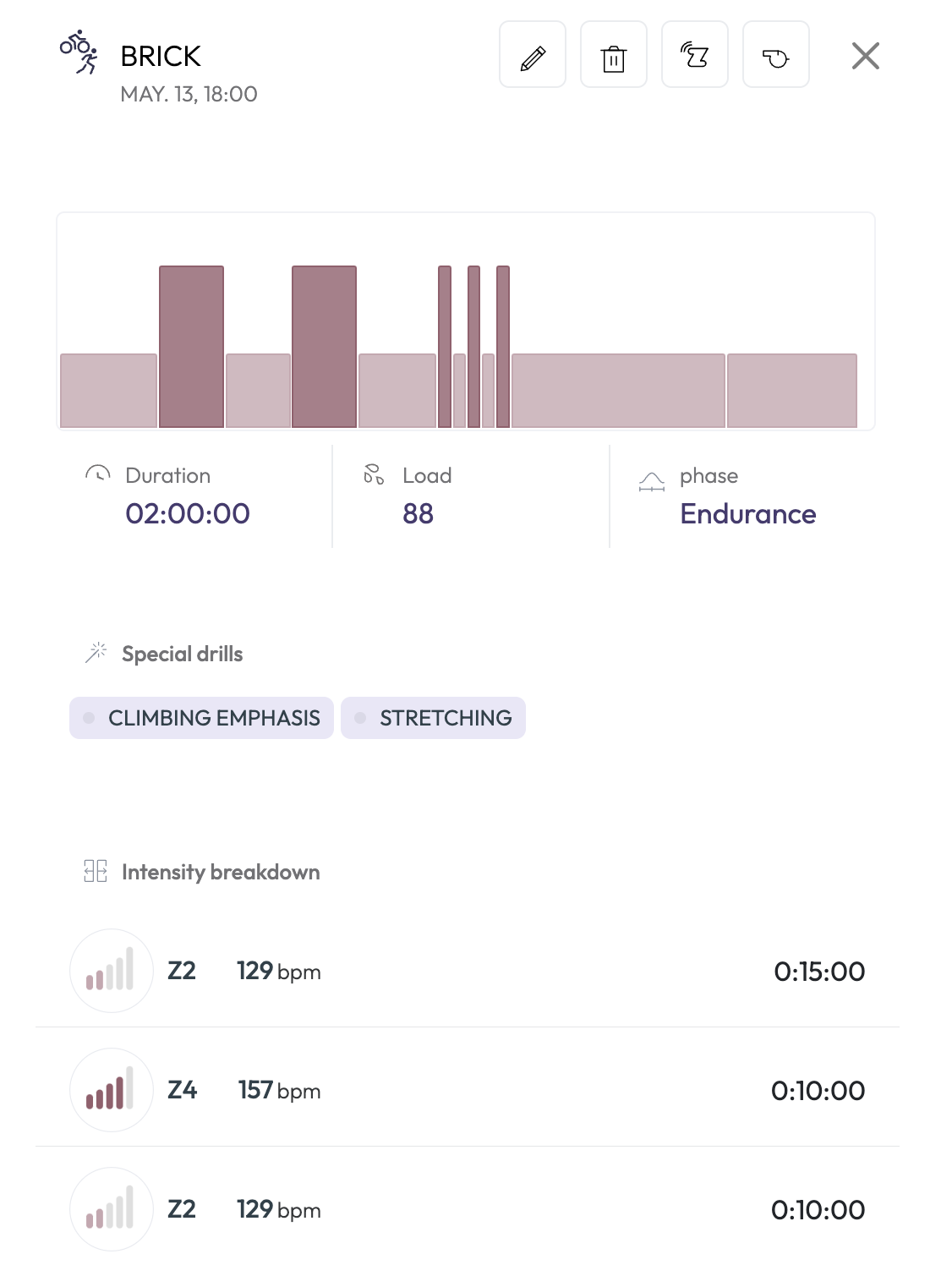Have you ever gotten off the bike and felt your legs stiff, almost out of control, as soon as you start running? Don’t worry—this is a common sensation among triathletes. And that’s exactly why Brick Training exists: a targeted workout that prepares both your body and mind for that critical transition between disciplines. In this article, you’ll discover why brick sessions are a key element in triathlon preparation, how to train them effectively, and how 2PEAK automatically integrates them into your plan to get you into peak shape.
What is Brick Training (and why is it called that)?
Brick Training, or combined training, is a workout that links two triathlon disciplines—most often cycling and running, but sometimes swimming and cycling—without significant breaks between them. In practice, you finish your bike segment and immediately slip into your running shoes to start running.
But why “brick”? There are several theories: some say it comes from the feeling in your legs when you start running after cycling—they feel like bricks. Others suggest that stacking different disciplines one after the other resembles laying bricks to build a wall. Finally, some see it as a simple acronym: Bike + Run = BRick. Whatever the origin, the effect is real—and training it makes a big difference.
Why It Matters
During a race, your body undergoes a radical shift from the biomechanics of cycling to those of running. This transition isn’t natural—it can slow you down, throw off your muscular coordination, and cost you valuable seconds—or even minutes.
Brick training helps you:
- Get your legs and mind used to switching disciplines (and in the case of swim-to-bike, also to the shift from a horizontal to vertical position)
- Train your body to handle aerobic, anaerobic, and muscular demands
- Improve your pacing during the final part of the race
- Optimize your energy management and deal with accumulated fatigue
- Simulate race-day conditions in a realistic way
In short, combined training is almost essential for triathletes who want to improve. Adding bricks to your plan helps you run better, faster, and with less effort after the bike.
How to Integrate Brick Training
The key is to include it at the right time and with the appropriate intensity. There’s no need to do bricks every week all year round—they should be done when they really count. The best time to start adding bricks is in the specific preparation phase, which typically begins around 12 weeks before your target race.
You don’t need to start with intense sessions. To ease into brick training, a short run after the bike is enough. Even just 10–15 minutes can help your body feel the transition and begin to adapt. The important thing is to be consistent and gradually increase intensity and duration to avoid injury and enhance movement efficiency. Naturally, the training load should be adjusted to your experience level and goals—a sprint triathlon requires a different preparation than an Ironman.
Practical Tips
- Prepare everything in advance (running shoes ready next to your bike)
- Practice the technical part too—transitions
- Pay attention to hydration and nutrition
- Replicate race-day conditions (clothing, timing, fueling)
- Avoid overly intense bricks after a long session—recovery is key
How 2PEAK Helps You
With 2PEAK, you don’t have to worry about when to schedule brick sessions, how long they should last, or how intense they should be. Our adaptive training system automatically plans brick workouts in your schedule based on:
- The phase of your training
- Your weekly availability
- Your goals and target races
- Your current recovery level

Each brick session is tailored specifically to you and adapts in real time to your progress. This way, you avoid doing too much, too little, or training at the wrong time.
In Conclusion
At first, transitioning from one discipline to another can feel like a real challenge. Your body reacts slowly, coordination goes haywire, and your legs don’t respond the way you want them to. That’s completely normal—each sport activates different muscles, postures, and movement patterns, and it takes time to build the connections that make the transition smooth.
Training to switch “modes” under physical stress—with consistency and structure—helps you turn that critical moment into a solid part of your race. Practicing the movement, simulating the sensations, preparing your body to respond—this is what separates those who fade during the second leg from those who power through to the finish.
If you’re preparing for your first triathlon, don’t overlook it. And if you truly want to improve, make brick training an essential part of your preparation.

